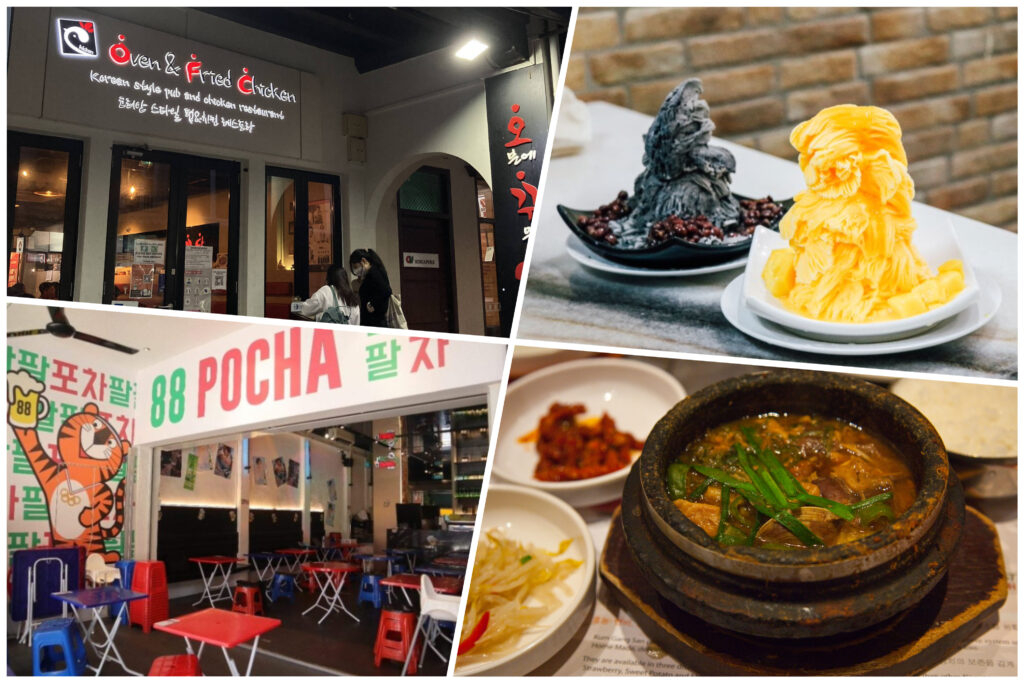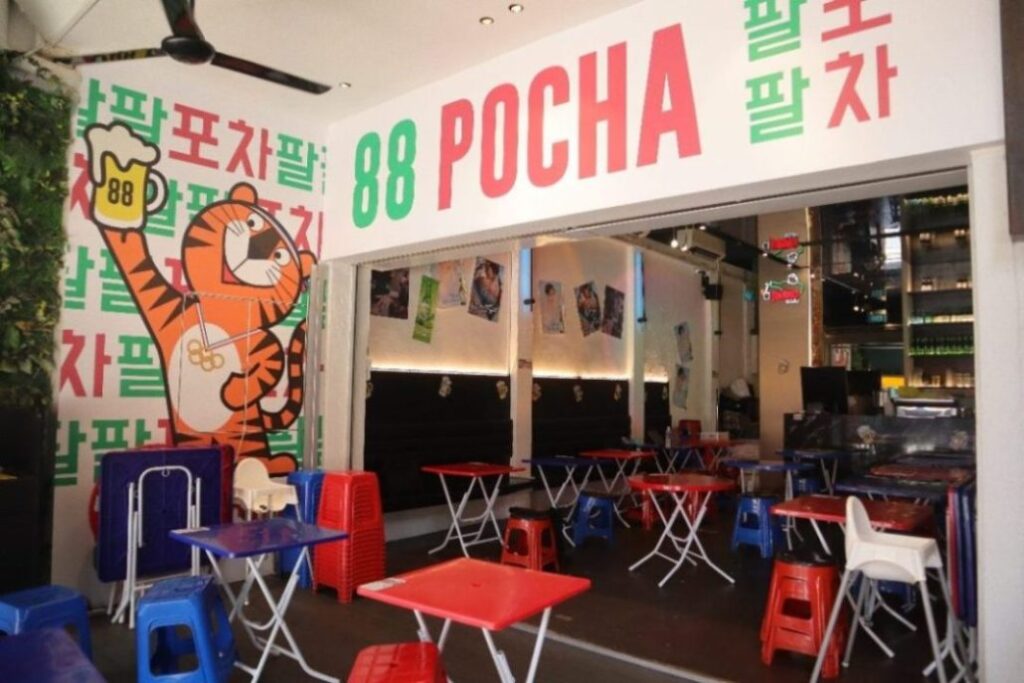
Small restaurant → Chicken restaurant → Shaved ice and barbecue restaurant → Luxury restaurant. The craze for K-restaurants, Korean restaurants, continues. At least 10 Korean restaurants have opened this year, and more than two new ones will open by the end of the year. In the Korean food business, not only individuals but also Taiwanese food companies are engaged. “The Straits Times, Singapore’s largest daily newspaper, introduced the Korean restaurant craze that continues in the country on the 19th. Several places are reporting their participation in the opening of Korean restaurants. Singaporean businessmen who are fascinated by Koreans living in Singapore and K-food, as well as prestigious food and beverage companies, are jumping in.

Singaporeans walk in front of 88 Pocha, a restaurant launched by Taiwan’s Food Palace Group.Taiwan’s Food Palace Group, which has beef noodle soup and bubble tea brands, opened four restaurants under the newly launched 88 Pocha brand this year. In September, a restaurant named K Town will open in the busy Bugis Junction area. Korean fried chicken, stew, jjamppong, and spicy seafood are assumed to be the main menus. Success Holdings, which operates the Korean barbecue restaurant chain Seorae, is also active. Success Holdings opened its sixth branch in North Point City in June. Earlier in April, it created a new brand “Bullet Show” and started operations at Boogie’s Junction and Woodray Mall in April and May. An employee is making food at the store of Singapore food chain Success Holdings’ new brand “Bulmeat Show.” As in other countries, it is difficult to survive in any industry without competitiveness in Singapore, a multi-ethnic country where global companies have entered. Competition is so fierce as it is a country where Chinese, Malay, and Indian Tamils, who have lived long before independence in 1965, live together with workers, residents, and dispatchers of global companies in nearby areas. It is a hub of global logistics and finance and has a developed dining culture. “In the Singapore restaurant sector, which dreams of coexistence of the latest trends and traditions, K-food is showing competitiveness by steadily developing and introducing products based on the Korean Wave,” he said. In addition to the existing achievements of emphasizing the originality of high-quality images and Korean food, K-restaurants have recently expanded the door to make it easier for local middle class to access, said Moon, head of the center.
The success of the K-restaurant can be found in that it adds novelty. First of all, it can be pointed out that it adds fun. For example, Korean restaurants are adding fun to K-food by allowing customers to grill meat on a grill or watch a chef cook, according to the Straits Times.
K-Restaurant’s relentless moves are difficult to explain except for the competitiveness of Korean content. Jang Kyung-bok, a chef at a fusion restaurant in Singapore, explained in conjunction with his interest in K-drama and K-pop. It is explained that interest in Korean Wave content is leading to the preference for Korean food. In other words, the influence of the Korean Wave is large. It is well known that K-drama contributed to Singapore’s K-food craze. The Food Palace Group was able to release a new brand of Pocha because it was inspired by Korean dramas.

K-food has become more popular as it combines with Singapore’s everyday dining culture. “Singaporeans eat out regardless of breakfast, lunch, or dinner,” said Margot of the Food Palace Group, which introduced the concept of the Pocha brand. Due to the daily life of dining out, E-Mart 24 also changed its concept to allow simple cooking in the store. Ordinary locals are also jumping into the operation of Korean restaurants. In some cases, the love of the Korean Wave has led to the restaurant business. This is the case with Success Holdings’ manager Wilya Wati. He opened a restaurant after his trip to Korea. When I traveled to Korea in 2010, I went to Seorae, a restaurant, and I fell in love with the taste, and later invited a chef to open a restaurant in 2015. Although he was in charge of the financial sector of a multinational company, he could not give up his desire for the Korean food business. As the popularity of Korean restaurants continues in Singapore, the scope is expected to expand. The prevailing view is that the main body and menu of restaurant operators will also be diversified. If existing efforts continue, the Korean Wave and K-restaurant will continue their clear trend in Singapore, a gourmet heaven, based on their competitiveness. However, restaurants that cook review regulations and hygiene management legislation (establishment and opening) in detail. A thorough review should be made for continuous operation rather than temporary fashion.
SAM KIM
US ASIA JOURNAL



